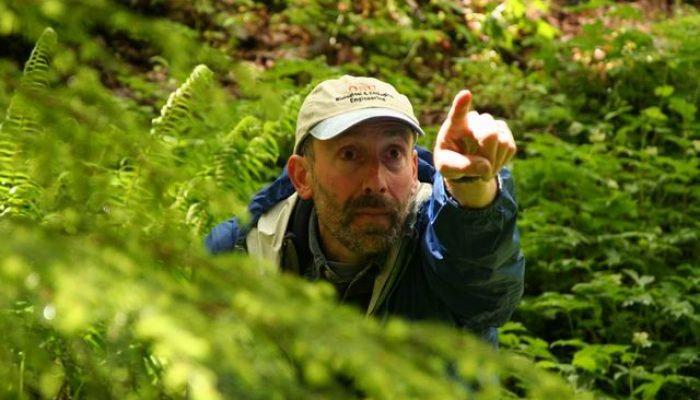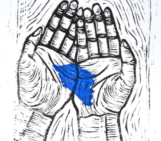
This is an inspiring article by John Selker (Oregon State University) that was first published in the latest AGU Hydrology Section Newsletter (July 2014). John graciously offered to re-post it here… make sure you make it to his rules and a secret at the bottom.
Being elected a fellow of the AGU was an amazing honor, and I thank those who so kindly nominated me, somehow crafting a silk purse from the assorted bits and pieces I have left behind over 25
years. I take this opportunity to address nontechnical aspects of my experience. After all, the science is easily found on-line, whereas the ins and outs of personal scientific strategy rarely see the light of day.
My research is the outcome of local optimization scheme with the objective of identifying the next approach when faced with calls for proposals which I saw I could address, thus seemed opportune, but did not deeply stimulate my curiosity. I was lured into that trap a few times. But in time, putting greater weight on “the likelihood that I will be excited by the work” than “the chances that the ideas will be successful” and putting “the chances that I would be funded” last,
my research program took a turn for the better (right around the time I got tenure – funny how that works). Behind this all lurks the fact that I am more fascinated by challenges than questions. I do
not see this as an advantage: great scientists seek answers to great questions, not just engaging puzzles. I tend to be hooked on a question, which sometimes take decades to unravel.
This “strategy” (more accurately a propensity) is best understood by an example of a question and its resolution. Here’s one which can be explained compactly, which we could call “the steam water
quality sampling conundrum:” design an ultra cheap sampler of 1-month time-averaged stream chemistry. What a neat problem! So we started with the fact that a sampler must have a vessel to
hold the material collected. Next, if it is to sample from a stream, it would be good if it sank. So at a minimum we must have a weighted brown glass bottle. At this point a little context is needed. David Rupp had just found significant pesticide in runoff and wondered how many stream might have this problem (Rupp et al., 2006), so we needed to sample at hundreds of points for the little money I
could gather: about $1,000 – the cost of the bottles. So we stared at a bottle: the answer must be here. “Fine, let’s just drill one tiny hole in the bottle cap and call it done.” When the stream water warms the
bottles air expands sending out 2% of the air from the hole (PV=nRT and T changes about 6 oK out of 300 oK). Cooling contracts the air, drawing in water. It fills half-way in a month. David and I had a great time making and testing these bottles. By the time we were confident in the design, the project was by over, but we got enough data to publish (Selker and Rupp, 2005). How important
was this work? The paper has been cited twice (and those only citing our work to justify that weird sampling strategies are publishable. A wonderful puzzle solved, but that interested fewer people than
would be invited to a dinner party.
So should we follow the branching Fibonaccian web of passion or a single path? Eternally seduced by the next “cool problem” means that I do not tend to follow otherwise discernible “lines of investigation” and is likely to lead to lost papers such as the sinking bubble bottle. I have been told that this is not the best route to “success,” and that staying focused on a single theme brings greater
recognition of your work. Yes, I agree, in the abstract. But this theory is trumped, in my opinion, by the absolute requirement that a researcher’s spirit be engaged in their work if they are to have a
hope of accomplishing anything truly original and important. If you don’t find yourself dreaming about it, you just aren’t fully engaged: you are just using a tiny fraction of your brain, missing out on
the chance to excel.
How do we balance these factors? Don Nielsen’s question needs to be added to the criteria for selecting a research project: is the problem important to humanity? And he means REALLY important!
Stumbling in the dark you are sometimes lucky enough to bump into a lump of gold. Marc Parlange is uniquely expert at helping people stumble productively. Preparing to come to Switzerland on sabbatical to work with Marc he suggested I work on glacier melting. The problem is that glaciers melt largely due to shortwave
radiation absorption, and if you stick anything in the glacier to measure the radiation or temperature, it gets hot in the sun, and melts the ice. “What if I had an entirely transparent thermometer?” I recalled hearing about fiber optic temperature measurements, so I started to check on that approach. We tried hard to measure the glaciers melt with fiber optic distributed temperature sensing (DTS), but the bottom line is that I never got any important publishable data. I tip my hat to all those studying snow! But the DTS method
allowed measurement of 10’s of thousands of temperatures across scales of 0.1 to 10,000 m. These are precisely the scales at which “point” measurements and remote sensing. This is an obvious gold mine for our science (opportune? Yes!). We have now used DTS to “see” air movement, quantify groundwater upwelling in streams, measure soil water content, observe lake stratification, surface temperatures of the ocean, and flow in deep boreholes. A wonderful aspect of the scientific endeavor is that we move as a community. We (my DTS buddies Scott Tyler and Nick van de Giesen) have now put on 15 hands-on workshops training folks how to use the method, and started an NSF-funded center (CTEMPs.org) where we make the gear and technical support available to others who have ideas that DTS might help address. It has been a delight.
The bottom line is that life is too short to:
1. Study problems that don’t matter;
2. Try to “go it alone” rather than feeling the joy of community;
3. Get stale studying the same old thing. If you feel it is fresh, great. If not, then open your eyes to new problems;
4. Worry about others stealing your ideas!The jokes on them – you are multiplying the number of people who are helping you answer the questions that you can’t wait to understand. Share your ideas, your data, your time.
Here’s a little secret: the coolest problem ever is just around the bend. Take the corner, and enjoy the ride. I can’t point the way, but following a few simple rules I promise you’ll have a great time
wandering.
Rupp, D.E., K. Warren, E. Peachy and J.S. Selker. Diuron in Surface Runoff and Tile Drainage from Two Grass-Seed Fields. J. Env. Qual. 35:303-311. 2006.
Selker, J.S. and D.E. Rupp. An environmentally driven time integrating water sampler. Water Resour. Res. 41. W09201,DOI:10.1029/2005WR004040. 2005.





Natasha
Your style is so unique compared to other folks I’ve read stuff from.
Many thanks for posting when you have the opportunity,
Guess I will just bookmark this blog.
Pingback: Repost from Water Underground on John Selker’s “Fellows Speak” letter | Watershed Hydrology Lab